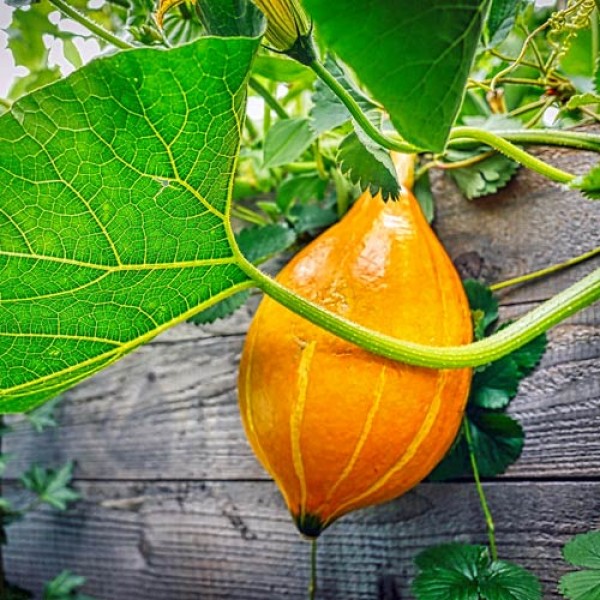
Growing Squash & Pumpkin
How to grow squash and pumpkins in your garden
Squashes have experienced a renaissance in recent years. They have even made their way onto the menus of gourmet restaurants. Along with cabbage, they are one of the most versatile vegetables in the garden and some pumpkins produce the largest fruits in the world.
It is worth growing this versatile and easy-to-grow autumn vegetable in the garden if you follow a few tips.
Location
Squash and pumpkin are highly nutritient-demanding plants and traditionally they are planted on or near compost. Grow them in a sheltered area that gets 6 or more hours of sun and has rich, well-drained soil.
Sowing
You can also sow squash directly in the garden after the danger of frost has passed, but it is advisable to sow indoors from mid-April. To do this, place one seed at a time 1 -2 cm deep in a pot filled with growing soil or compost, which you keep well moist. Outdoors, the soil should already have warmed up to 15°C and the danger of frost should have passed.
When no more frost is expected, the young plants can be planted into the bed. However, you should harden them off beforehand by putting them outside during the day. As slugs like to eat the young plants, it makes sense to let the plants develop some of their hairy leaves, which are not so tasty for slugs, before planting them in the bed. A slug collar or fence is also helpful.
Prepare the ground for squash by mixing in plenty of compost.
Squash are usually big plants, so space plants at least 1,5 metres apart. Climbing varieties sometimes need even more space.
Care
As squash are high nutrient-demanding plants it is important to fertilise regularly, e.g. with horn meal, nettle water, horse manure or plant pellets.
Squash need a lot of water, especially as soon as the plants start to bear fruit. If you do not water enough then, they may drop their blossoms and young fruits. As squash do not root very deeply, the upper soil must always be well moist. They can also only absorb enough nutrients if the soil is sufficiently moist. Caution: always water from below and not on the leaves, otherwise they can be attacked by mildew.
If you want to harvest beautiful large pumpkins, you should only allow two to three fruits to ripen per plant. When these are as big as tennis balls, cut off all other blossoms and also cut down the plant to one vine. Otherwise the plant`s vigour will go into the leaves of the side shoots. From July, cut back all shoots so that the last fruit is still supplied by three leaves. You can also underlay the growing squash fruits with a layer of straw or a wooden board to prevent them from rotting.
Tipp: The picked squash blossoms are edible and can be deep-fried, for example, coated with a beer batter.
Protection against pests and diseases
Pumpkins do well in the neighbourhood of maize, cucumbers and sunflowers.
The young plants tend to be eaten by slugs and snails. Slug collars or fences, beer traps, spreading coffee grounds and tirelessly collecting slugs from the bed can help against them.
Powdery mildew shows itself by a white-grey haze on the leaves. Then you must remove the infested leaves immediately and dispose of them in the household waste. For protection, spraying the leaves with a mixture of water and soft soap (15 ml to 1 litre of water) or household soda (4 tablespoons to 1 litre of water) helps.
Harvest
As soon as the squash or pumpkin no longer has any green spots, it is ready for harvesting. If you knock on its skin, you will hear a hollow and muffled sound. It can develop its flavour best if you let it ripen for another 2 to 3 weeks after harvesting in a bright, medium-warm place (about 20°C).
A few squash varieties can be eaten with the peel, including the Hokkaido. All others should be carefully peeled.











